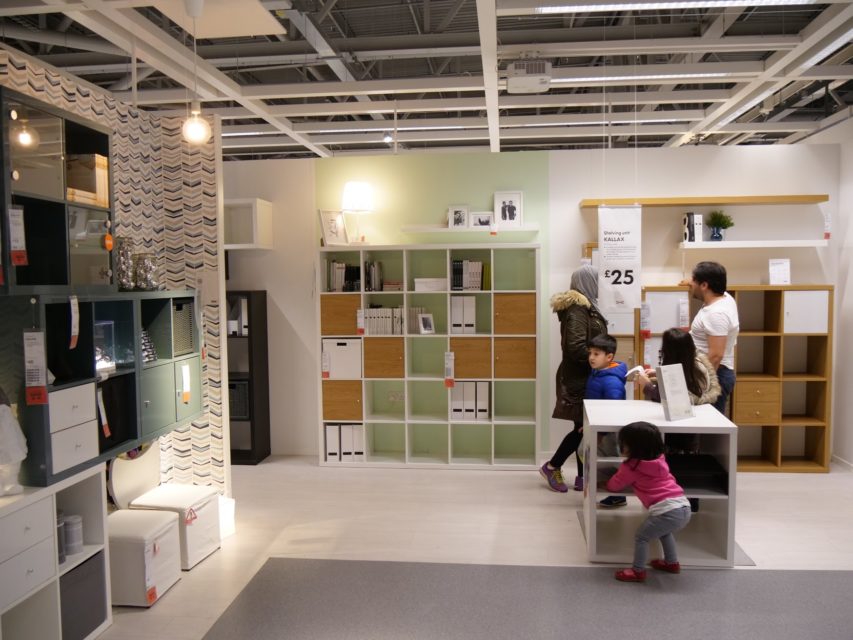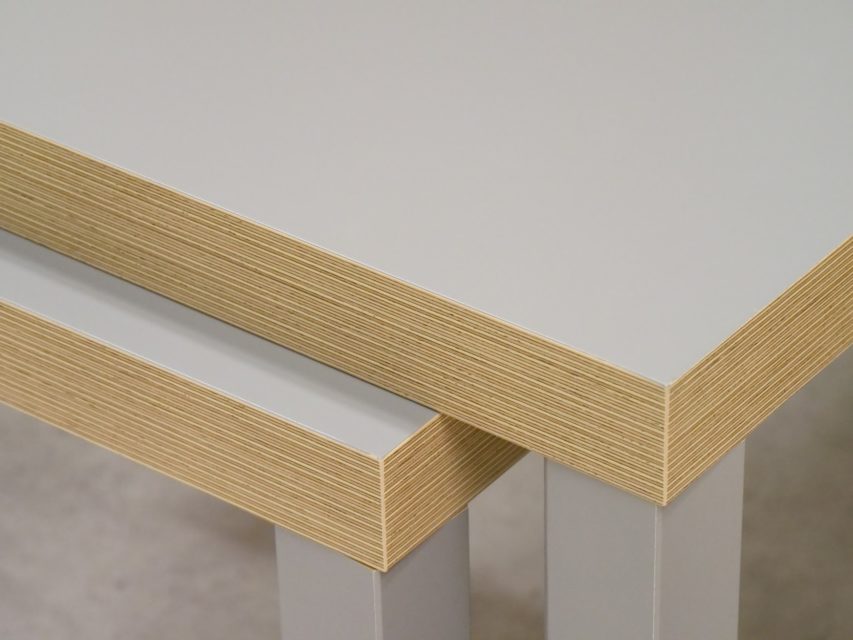Paul Sellers posted an article on his woodworking blog, reacting to some British journalists praising IKEA’s “democratisation of design”:
Visually neat and relatively cheap at first glance, but they are basic and they resolve the need in a new and young family for storage. The pinnacle of three-dimensional cubism!
(photo from PaulSellers.com)Yup! a couple of newspaper writers (maybe more, knowing British journalism) reported the same thing in a short space of time, both hailing IKEA as a ‘democratising’ force revolutionising people’s perspectives on furniture design. Both articles were interesting in the way some articles can be, you know, not contributing much to society really, but time filling on a lazy Sunday. What actually struck me most between their somewhat opposing points of views was the unifying thread in their use of the terms “democratisation of design” and “democratising design and the theme of creating affordable, non-fusty furniture for the masses.” As far as I have seen through the years it is not so much IKEA’s ability to design but more their ability to produce zero- or minimalist-design products that seem less to be concepts of style, shape or form but mostly the selling of square-edged, styleless, plank-type items in the form of very, very plain boxes. Yes, I do understand the needs of young families for low cost storage and first year students to furnish their rooms, but democratisers of design!
Unpretentious though their lines are, you can hardly say they are designs so much as meagre assemblies and of course assemblies you generally have to take care in the way they are used because the selling points are their lightweight cheapness, transportability, dismantle-ability and simple (or complex) self-assembly products. You might be better to strike out into similar fashion statements rejecting the classics of old and adopt an equally classless line of unimagination by using old scaffold planks for dining tables and benches or, say, a shipping pallet coffee table on commercial galvanised swivel casters.
Elizabeth and I used to enjoy visiting a furniture store up in Peterborough, but about a year or so back, they stopped carrying the kind of furniture we liked and started stocking exactly the sort of stuff Paul is talking about. Industrial chic is all very well, but these pieces looked like they’d been thrown together at the last possible second as a student project for a college design course: the industrial fittings were cobbled together as crudely and as shoddily as possible, with no eye to either aesthetics or sturdiness. They were literally props that might appear in the background of a Victorian or Edwardian shop floor scene in an off-, off-, off-Broadway kind of production.
I’m far from a curmudgeon on the topic of home decor and furniture, but the pieces in that store were expensive crap. You can do the industrial chic look, or more modern variations using cast-offs from all sorts of places. My friend Brendan, in his first couple of apartments, had no spare cash at all so he scrounged up pretty much all of his furniture from around town. He had the weirdest collection of decades-old store signs, former display cabinets from different eras, and I don’t know what else, but he has a great eye for design, so no matter how eclectic it all was, he managed to make it look appealing and (somehow) integrated. That was clearly the ideal for the owners of the Peterborough furniture store, but they missed the mark by a very large amount.
I never liked lazy, press-release type journalism (as we are used to in British woodworking magazines) because it can be the same as lazy design work; both lacking any true imagination. But the two authors, each celebrating IKEA’s birth for opposite and then too the same reasons, seemed more focussed on this issue of IKEA somehow ‘democratising’ something rather than considering what could be in essence more a diktat. I question whether IKEA makes products that people actually want or makes people want what they make by virtue of cheapness and driving out competition, but then what do I know? I know this though, IKEA only sells what it wants you to buy, sells stuff so cheap that no one else can compete, and devalues the market by forcing down prices to a level that promotes mainly quite dumbed down designs. I don’t ever recall much in IKEA’s selling centres that I would describe as at all imaginative. People buy there because it’s cheap. To zone in on the reporting world, on Beeb 4 a day later a reporter interviewed some head of IKEA UK and allowed way too much waffling claptrap boasting IKEA’s products were now no longer going into the landfill after a short lifespan as the reporter suggested, which is of course absolutely true, but onto the secondhand market, which IKEA wants to include in its ‘widening circle of circulation’.
[…]
On the one hand Rhiannon Cosslett article in the Guardian describes IKEA accurately as the “symbol of impermanence”, but she also follows the same track as India Knight in stating that this IKEA is enabling people to shed their ties with “snobbery regarding middle-class home decoration”. The woman reporting in the Times, India Knight, describes the pretension of owning a semi (duplex, USA) and adding furniture that emulates the chintz (a word used in the two articles) of the rich and famed owners living in UK mansions past as a kind of mindless hypocrisy. I agree to some degree, but then there are those millions of others who follow the IKEA trending in equally mindless ways buying into its philosophies purely on the basis that it’s IKEA, as though IKEA holds the keys to concepts of good design. This, in my mind at least, shows how lacking we can become in discerning just what a good design is. I might liken IKEA designs to all the nations County Councils use of standardised street and buildings signage. Yes, they work effectively, but only because they have a created dull and unimaginative examples that stand out because of dullness. The main difference here of course is that for safety reasons the County Councils have a get out clause. I have yet to walk through an IKEA store without thinking (smelling too) MDF, pressed fibreboard, resins and plastic but how is it even possible that any company could put so much effort into creating so much artificiality.





